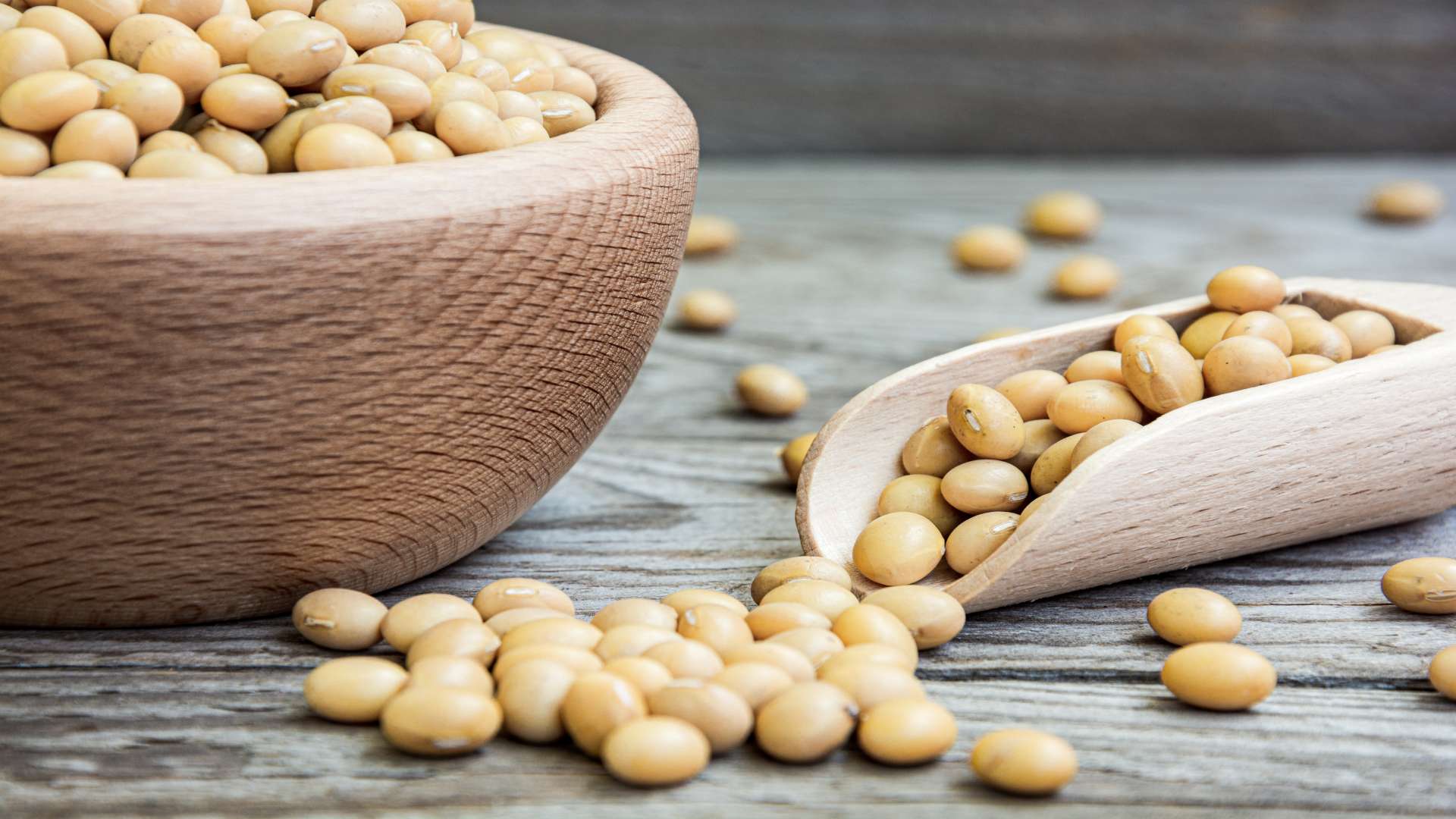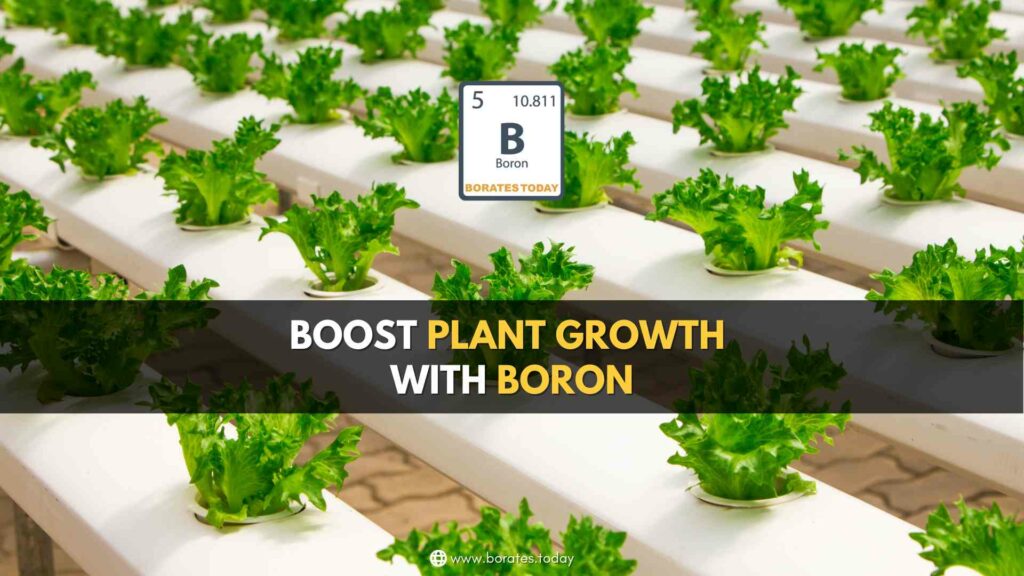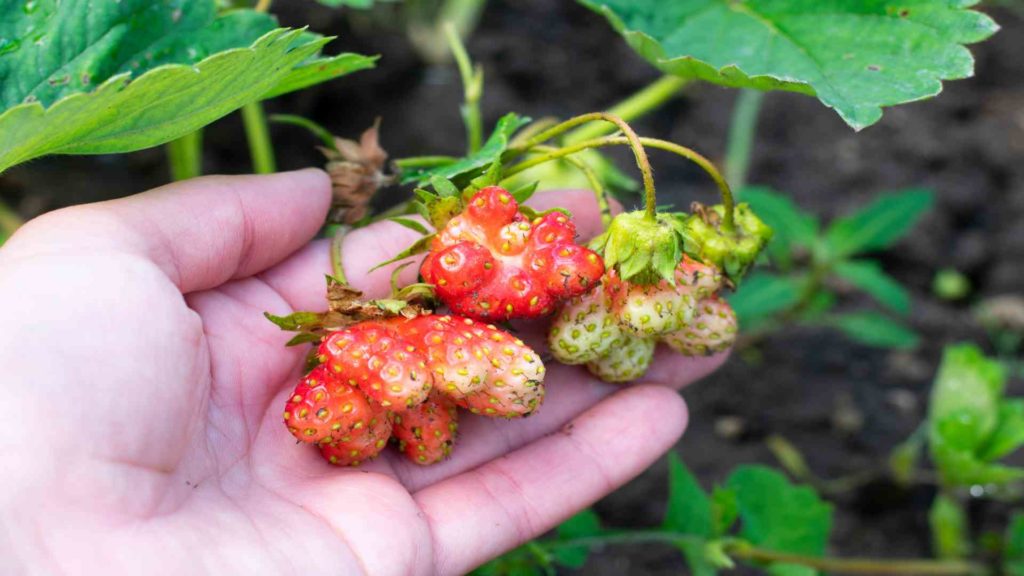The Critical Role of Boron for Soybeans
Soybeans are a major crop in the United States and play a critical role in our economy. Boron is an essential nutrient for soybeans that helps them reach their full potential. Without it, soybean plants will not be able to grow and develop properly, which can lead to decreased yields and crop quality.

Soybeans
Boron Helps Increase Yields
Boron is an essential micronutrient for the soybean plant and it plays a vital role in crop production. Not only does boron aid cell formation, cell wall, and vascular tissue formation, but also helps with node number and plant height as well as flower development, pollen viability, pod formation, and seed set.
Unfortunately for the soybean plant, boron isn’t mobile like nitrogen, phosphorus, and potassium, so it cannot recycle from old tissues. This means plants need a fresh supply throughout the growing season to avoid potential nutrient deficiencies, which could lead to reduced flowering or pod set.
It’s important to keep an eye out for early signs of deficiency, such as discoloration of young leaves or stunted growth, so that you can take action to make sure that plants get the nutrients they need.
Symptoms Leading to Boron Deficiencies in Soybeans
Boron deficiency can have drastic effects on the yield and quality of crops. In addition to interveinal chlorosis, brittle leaves, stunted roots, and withering flower buds, root tips may die, resulting in a rosette appearance.
From these symptoms, it is clear that boron plays an essential role in the reproductive stage of plants. Ensuring adequate boron availability during this critical stage is essential for healthy yields and quality harvests.
Unfortunately, soil depletion due to over-farming or poor soil management can result in insufficient levels of boron needed by crop plants. Therefore, adequate soil testing and corrective measures should be taken if there is evidence of a boron deficiency.
The Importance of Soil Testing and Plant Analysis
Boron deficiencies can severely impact crop health and yield. Fortunately, it is possible to effectively manage boron levels in the soil through careful monitoring and management.
Soil testing helps determine the amount of boron in soil and its availability for crops. Plant tissue analysis can be used to assess the current boron status of plants so that corrective measures can be implemented if necessary.
Maintaining the right level of hot-water-soluble boron when growing soybeans is essential for maximizing yield. The critical level of boron in most soils ranges from 0.2 to 0.5 parts per million (ppm), depending on soil pH, organic matter content, and texture.
If the soil has a boron content that is less than the critical level, applying supplemental boron may be beneficial to improve crop yields.
When the level of boron in the top mature soybean leaves is below 20 ppm, it can be detrimental to crop yield and quality. Adequate boron application will help maintain ideal levels for successful crop production.
Research Shows that Boron Improves Soybean Production
Boron is an essential micronutrient for plants and can be beneficial for soybean yields. However, too much boron can have negative consequences. To better understand how it impacts soybeans, Horst Bohner, a soybean specialist with the Ontario Ministry of Agriculture, Food and Rural Affairs (OMAFRA), is conducting trials with Mosaic Company’s Aspire fertilizer in Eastern Canada.
Aspire is a muriate of potash-based, granular fertilizer (0-0-58%-0.5B) that provides two forms of boron with 0.25 percent of each state: a formulation with “quick-release” sodium borate and a formulation with a more progressive release (for use later in the season). Aspire uses Nutriform technology, according to company literature.
In the research, Mosaic Stevanus claims that the boron is delivered in its various forms at the root level, ensuring year-round nutrient availability throughout the plant’s life cycle. The formulation assists in distribution, which is boron’s main issue, particularly in granular applications, and considers the required amount.
On his farm, he utilizes Aspire because, in his opinion, it is a better boron delivery system with a more uniform application, avoiding the drawback of conventional granular boron as part of a mix, which he has experienced as harmful, insufficient, and ineffective.
Horst Bohner emphasizes that understanding boron is important because it helps farmers use proper management strategies to maximize crop yields while minimizing any potential issues associated with excessive boron intake.
Research like this is critical because it provides valuable information on how best to care for our crops for greater yields and environmental sustainability.
Ideal Timing for Boron Application
Applying boron at early bloom can improve pollination and pod set, helping to maximize yield potential. Foliar applications of boron in conjunction with fungicide sprays are a common practice. However, it should be noted that more levels of boron may be needed for long-term soil fertility and crop health.
In cases of severe deficiency, additional foliar sprays throughout the season may be necessary to ensure adequate plant nutrition. It is also possible to apply boron through the soil at planting, although its mobility in soils might require more frequent application than other crop nutrients.
For soybeans to realize the full benefit of boron, timely applications are critical. Early foliar or soil-applied applications can help ensure adequate nutrient availability and reduce the chances of a deficiency impacting yields.
Furthermore, using foliar applications with soil-applied options will provide a more efficient uptake of the essential nutrient and ensure sufficient levels throughout the growing season.
In addition to affecting nutrient availability and yield potential, adequate boron is also important for nodulation. Proper nodule formation is critical for nitrogen fixation, so providing adequate nutrients will increase yields and improve soil fertility cycles.
Critical Factors for Success
An important part of managing soybean production is understanding the essential nutrients and how to use them to maximize yield potential. Knowing which nutrients are necessary for optimal crop growth, understanding their role in plant development, and how much should be applied are critical factors for successful management.
To ensure that plants receive sufficient nutrition, applying the right amount of fertilizer at the appropriate times throughout the season can help prevent nutrient deficiencies or excesses that may limit yields.





